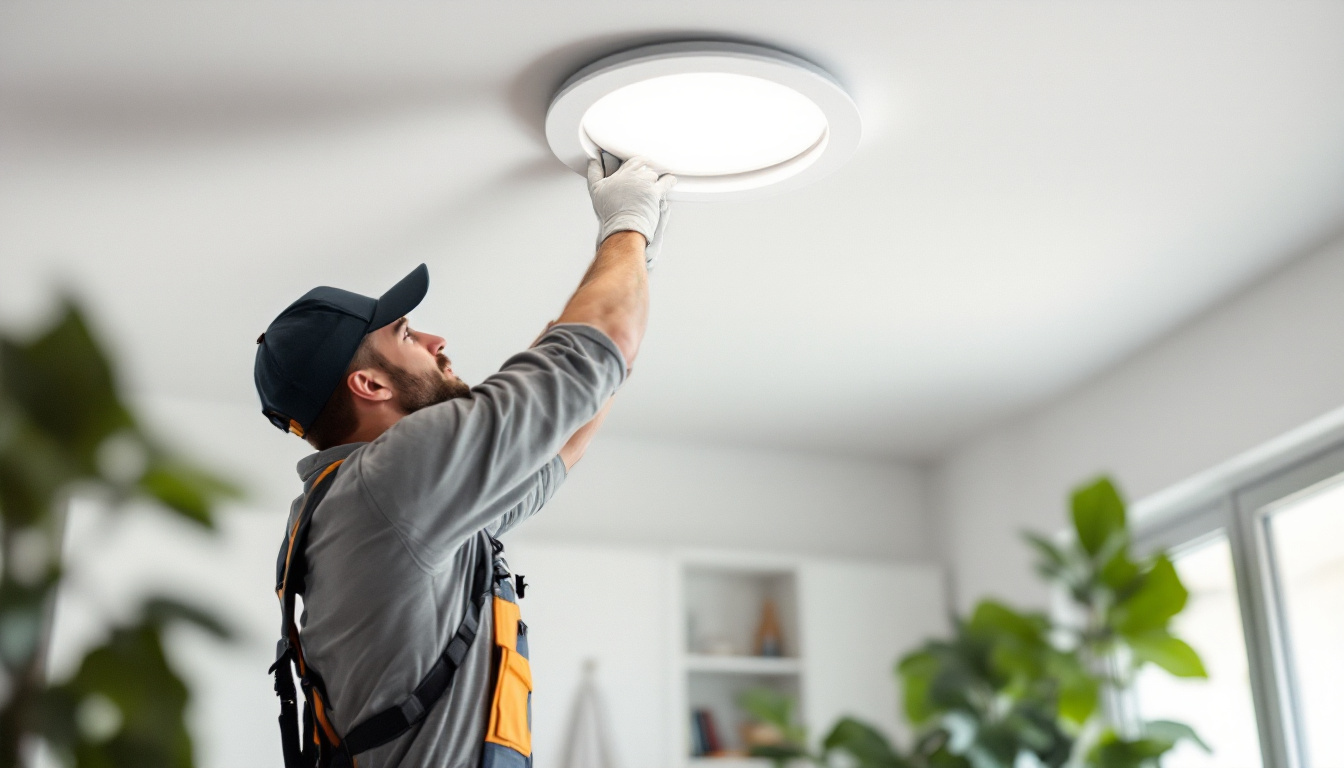
As the demand for sustainable energy solutions continues to rise, solar power lighting has emerged as a viable option for both residential and commercial applications. For lighting contractors, understanding the intricacies of solar power lighting is essential for providing clients with innovative and efficient solutions. This article delves into the key components, benefits, and considerations of solar power lighting, tailored specifically for lighting contractors.
Solar power lighting harnesses energy from the sun to illuminate spaces, making it an eco-friendly alternative to traditional electric lighting. The system typically consists of solar panels, batteries, LED lights, and a charge controller. By converting sunlight into electricity, these systems can operate independently of the grid, providing flexibility and reducing energy costs. Additionally, solar lighting contributes to a reduction in greenhouse gas emissions, promoting a more sustainable environment. As technology advances, the efficiency of solar panels continues to improve, allowing for greater energy capture even in less-than-ideal weather conditions.
To effectively design and install solar power lighting systems, contractors must be familiar with the key components involved. Each component plays a crucial role in the overall functionality and efficiency of the system. Understanding the specifications and capabilities of each part can lead to more effective installations that meet the specific needs of various environments.
Solar power lighting comes in various forms, each suited for different applications. Understanding these types can help contractors recommend the best solutions to their clients. The versatility of solar lighting allows for innovative designs that can cater to both functional and aesthetic needs in various settings.
Implementing solar power lighting systems offers a multitude of benefits, making them an attractive option for both contractors and clients. Understanding these advantages can aid in promoting solar solutions effectively.
One of the most significant advantages of solar power lighting is the reduction in energy costs. By utilizing solar energy, clients can decrease their reliance on traditional electricity sources, leading to lower utility bills. Additionally, many solar lighting systems require minimal maintenance, further reducing long-term expenses. Over time, the initial investment in solar technology can be recouped through these savings, making it a financially sound decision for homeowners and businesses alike. Furthermore, with the increasing availability of government incentives and rebates for solar installations, the upfront costs are becoming more manageable, encouraging wider adoption.
Solar power lighting is a clean energy solution that contributes to reducing carbon footprints. By harnessing renewable energy, clients can take a proactive approach to sustainability, which is increasingly important in today’s eco-conscious market. This not only benefits the environment but also enhances the reputation of businesses that prioritize green initiatives. Moreover, the shift towards solar lighting helps reduce reliance on fossil fuels, which are a major contributor to air pollution and climate change. As communities become more aware of their environmental responsibilities, the adoption of solar lighting can serve as a powerful statement of commitment to a sustainable future.
Solar lighting systems can be installed in a variety of settings, from urban streets to rural pathways and residential gardens. Their independence from the grid allows for installation in remote areas where traditional electrical infrastructure may be lacking. This versatility opens up new opportunities for contractors to expand their service offerings. Additionally, solar lights come in a range of styles and designs, making them suitable for various aesthetic preferences and functional needs. Whether it’s for illuminating a park, enhancing security in a parking lot, or creating a cozy ambiance in a backyard, solar lighting can be tailored to fit the specific requirements of any project. This adaptability not only meets diverse client needs but also encourages creative solutions in outdoor design.
While solar power lighting presents numerous benefits, there are also several considerations that lighting contractors must keep in mind when designing and installing these systems.
A thorough site assessment is essential before installation. Factors such as the amount of sunlight the location receives, potential shading from trees or buildings, and the geographical orientation of the site can significantly impact the performance of solar lighting systems. Contractors should conduct a detailed analysis to determine the best placement for solar panels and lights.
Properly sizing the solar power lighting system is crucial for ensuring optimal performance. This involves calculating the energy requirements of the lighting fixtures, the capacity of the solar panels, and the storage needs of the batteries. Contractors must balance these elements to create a system that meets the client’s needs without over or under-sizing components.
Contractors should be aware of local regulations and codes regarding solar installations. Compliance with these standards is critical to ensure safety and legality. Additionally, understanding any incentives or rebates available for solar installations can provide clients with further financial benefits.
Successful installation of solar power lighting systems requires adherence to best practices. These practices not only enhance the performance of the systems but also ensure client satisfaction.
To maximize energy collection, solar panels should be installed in locations with direct sunlight exposure for most of the day. This often means positioning them at an angle that optimizes sun exposure throughout the year. Proper alignment and tilt can significantly improve energy efficiency.
Using high-quality wiring and connections is essential to prevent energy loss and ensure system reliability. Contractors should utilize weather-resistant materials and ensure all connections are secure to withstand outdoor conditions. Additionally, following manufacturer guidelines during installation can prevent issues down the line.
After installation, it is crucial to test the system to ensure all components are functioning correctly. Regular maintenance checks can help identify any issues early on, ensuring the longevity and efficiency of the solar lighting system. Educating clients on basic maintenance practices can also enhance their satisfaction with the installation.
The solar power lighting industry is continuously evolving, with new technologies and trends emerging. Staying informed about these developments can help contractors remain competitive and provide cutting-edge solutions to clients.
Integrating smart technology into solar lighting systems is becoming increasingly popular. Features such as motion sensors, remote control capabilities, and smart scheduling can enhance the functionality of solar lights. Contractors should explore these options to offer clients more advanced solutions that improve energy efficiency and convenience.
As battery technology advances, solar lighting systems are becoming more efficient and reliable. Newer battery types offer longer lifespans and faster charging capabilities, allowing for better performance in varying weather conditions. Keeping abreast of these advancements can help contractors recommend the best options to clients.
Community solar projects are gaining traction, allowing multiple users to benefit from a single solar installation. This trend can open up new opportunities for contractors to participate in larger-scale projects, expanding their client base and enhancing their portfolio.
Solar power lighting represents a significant opportunity for lighting contractors to expand their services while promoting sustainable energy solutions. By understanding the components, benefits, and installation best practices associated with solar lighting, contractors can provide valuable insights and recommendations to clients. As the industry continues to evolve, staying informed about emerging trends will further enhance the ability to deliver innovative solutions in the realm of solar power lighting.
Ready to harness the power of the sun and elevate your lighting installations? LumenWholesale is here to support your journey into solar power lighting. With our extensive selection of spec-grade lighting products at unbeatable wholesale prices, you can confidently meet the growing demand for sustainable solutions. Say goodbye to inflated markups and hello to premium quality, affordability, and the convenience of free shipping on bulk orders. Don’t compromise on performance or price. Take the next step and explore our collection for Wholesale Lighting at the Best Value today.

Discover the hidden opportunities in low voltage wire clearance sales that lighting contractors frequently miss.

Discover why the 2-inch recessed downlight is becoming an essential tool for lighting contractors.

Discover the indispensable role of 3-way switches in modern lighting projects.

Discover why purchasing light bulbs and LED tubes in bulk from local distributors might not be the best choice.